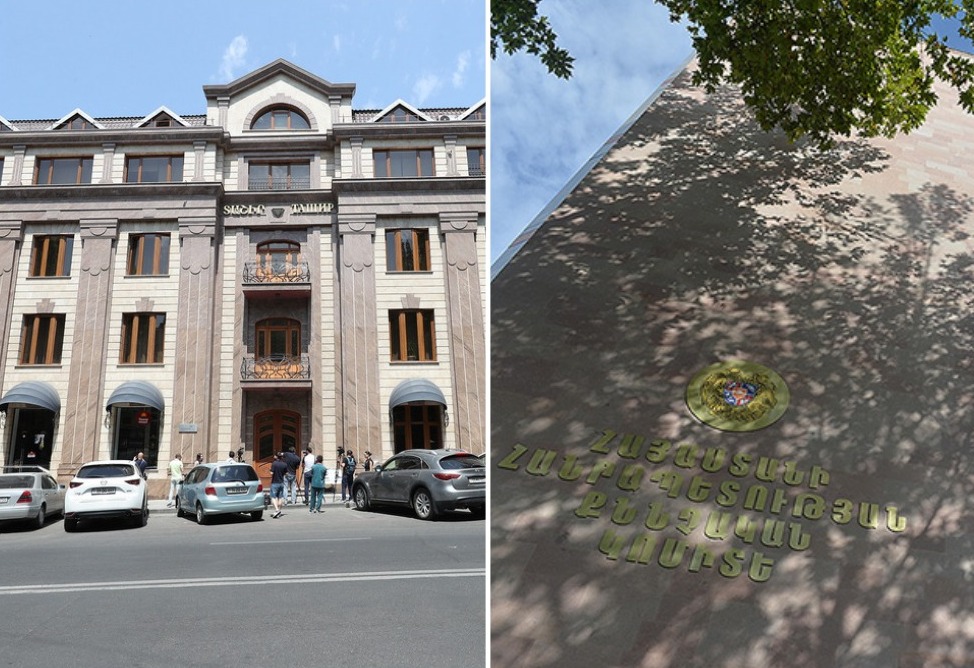Study reveals that 41 percent of young Armenians not willing to work
28.03.2019,
11:21
About 41% of working-age young people in Armenia are not willing to work and more than half of economically inactive young people are women, according to the findings of a study on youth and labor market conducted by the Armenian offices of Save the Children and World Vision International charity organziations. The findings of the study were unveiled March 27 by Astghik Movsisyan, the head of the Armenian office of the Save the Children organziation. The study conducted from June to October 2018 embraced 846 young people across the country aged 18 to 30.

YEREVAN, March 28. /ARKA/. About 41% of working-age young people in Armenia are not willing to work and more than half of economically inactive young people are women, according to the findings of a study on youth and labor market conducted by the Armenian offices of Save the Children and World Vision International charity organziations.
The findings of the study were unveiled March 27 by Astghik Movsisyan, the head of the Armenian office of the Save the Children organziation. The study conducted from June to October 2018 embraced 846 young people across the country aged 18 to 30.
Speaking at a news conference Movsisyan said the study revealed a string of gaps in education and the demand in the local labor market, which should be addressed immediately. She said the study sought two goals -to reveal the share of young people with education and wanting to work, but who cannot find a job, and the share of young people who chose unemployment, that is those with education but not seeking jobs. In her words, the second group comprised 41% of all surveyed and more than half of this category were women, although more women receive education and have high academic performance.
The study says that the main reason for the reluctance or inability of women to work is domestic work and child rearing (47.5% of respondents). Some 37.8% of women said they did not work because they were receiving an education, and 14.3% simply did not seek jobs. According to the study, jobless young people account for 16% of the entire young population of the country, and the unemployment rate among economically active youth is 27%.
Movsisyan said also the study showed that most young people with education and jobs believe that they meet the requirements of the labor market thanks to non-formal education. Among those who received secondary special education more than 80% think that non-formal education was more useful for them and helped get a job.
"We have a problem, which is to bring non-formal education in the formal field. It is necessary to make sure that the resources invested by the government in the formal education are justified, thereby bringing education closer to the demands of the labor market, which change very quickly, "she added.
Movsisyan noted that the study has developed proposals concerning various areas, not only for the Ministry of Education and Science and for the Ministry of Labor and Social Affairs, but also for the private sector, which should also be involved in improving the quality and effectiveness of education. The study was part of the EU-funded initiative for young people. --0---
The findings of the study were unveiled March 27 by Astghik Movsisyan, the head of the Armenian office of the Save the Children organziation. The study conducted from June to October 2018 embraced 846 young people across the country aged 18 to 30.
Speaking at a news conference Movsisyan said the study revealed a string of gaps in education and the demand in the local labor market, which should be addressed immediately. She said the study sought two goals -to reveal the share of young people with education and wanting to work, but who cannot find a job, and the share of young people who chose unemployment, that is those with education but not seeking jobs. In her words, the second group comprised 41% of all surveyed and more than half of this category were women, although more women receive education and have high academic performance.
The study says that the main reason for the reluctance or inability of women to work is domestic work and child rearing (47.5% of respondents). Some 37.8% of women said they did not work because they were receiving an education, and 14.3% simply did not seek jobs. According to the study, jobless young people account for 16% of the entire young population of the country, and the unemployment rate among economically active youth is 27%.
Movsisyan said also the study showed that most young people with education and jobs believe that they meet the requirements of the labor market thanks to non-formal education. Among those who received secondary special education more than 80% think that non-formal education was more useful for them and helped get a job.
"We have a problem, which is to bring non-formal education in the formal field. It is necessary to make sure that the resources invested by the government in the formal education are justified, thereby bringing education closer to the demands of the labor market, which change very quickly, "she added.
Movsisyan noted that the study has developed proposals concerning various areas, not only for the Ministry of Education and Science and for the Ministry of Labor and Social Affairs, but also for the private sector, which should also be involved in improving the quality and effectiveness of education. The study was part of the EU-funded initiative for young people. --0---



